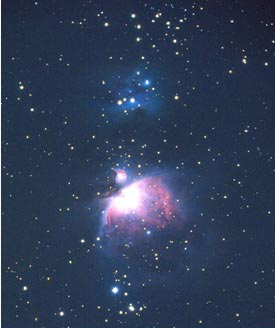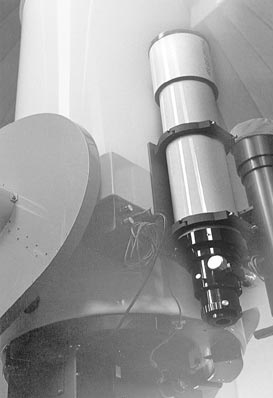Astrophotography
 Research requires telescope parameters that produce good numbers. For example, CCD electronic imaging is superb for quantitative measurements of the colors and brightness of stars. For wide-field imaging, film-based photography is sometimes better, because of the size of the image. For students who may not have time to learn the intricacies of CCD imaging, photography is simple and can produce excellent results.
Research requires telescope parameters that produce good numbers. For example, CCD electronic imaging is superb for quantitative measurements of the colors and brightness of stars. For wide-field imaging, film-based photography is sometimes better, because of the size of the image. For students who may not have time to learn the intricacies of CCD imaging, photography is simple and can produce excellent results.
Reflectors vs. Refractors? Refracting telescopes use a large lens to form the image, and reflecting telescopes use a curved mirror. Which one is preferable for astrophotography? There are several factors to consider, and we have summarized the advantages of reflectors vs. refractors for astrophotography.
The VMI Apochromatic Refractor We are fortunate to have an excellent refractor which is optimized for astrophotography. The Astrophysics Model 130 5-inch refractor, made by Astro-Physics, Inc. is an apochromatic refractor, which is an optical design which goes one step further than the achromatic lenses to correct for chromatic aberration (the natural occurrence of blue light coming to a focus at a shorter distance than the longer wavelengths). The resulting images with this type of lens are sharper than for any other refractor optical designs.
Learn more about Astro-Physics, Inc.
We mounted the 5-inch refractor on the VMI 20-inch reflector, so that the large telescope acts as a tracking platform for the refractor. The focal ratio is f/7, with a tube length of 35 inches. It produces superb images for visual observations and we often use a 17mm eyepiece, for a magnification of about 50 power (perfect for nebulae and galaxies). We pick up a guide star on the 20-inch telescope and can then make small corrections to the tracking.
 For astrophotography, we use a field flattener lens, which changes the f-ratio to f/6 and gives tack-sharp images out to the edge of the field. The refractor accommodates a 35mm camera, but we prefer the medium format Pentax 6x7, with the larger 120 film size.
For astrophotography, we use a field flattener lens, which changes the f-ratio to f/6 and gives tack-sharp images out to the edge of the field. The refractor accommodates a 35mm camera, but we prefer the medium format Pentax 6x7, with the larger 120 film size.
This view shows the 20-inch reflector from the northeast, with the two refractors. The black-tube refractor (on the right) is the finder telescope (generally not used, because the computer pointing of the 20-inch is so accurate).
The Astrophysics photographic refractor is on the left (white tube with two black mounting rings). Here the eyepiece has been replaced with a camera adaptor for the Pentax 6x7 medium format camera.
.svg)
.png)